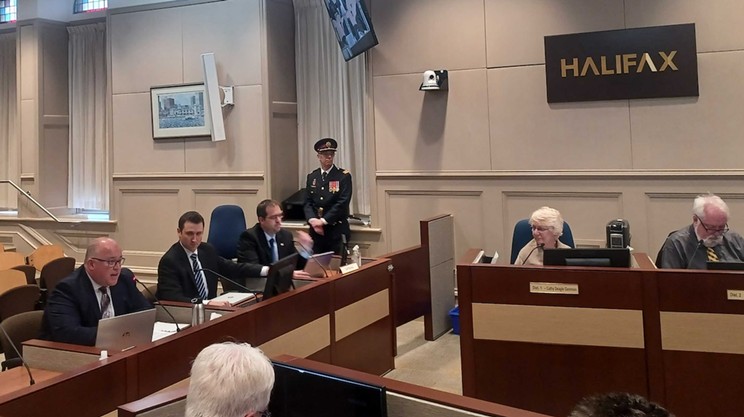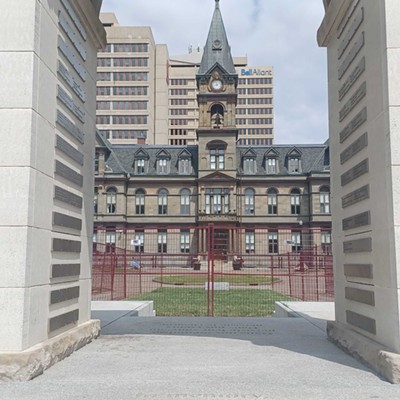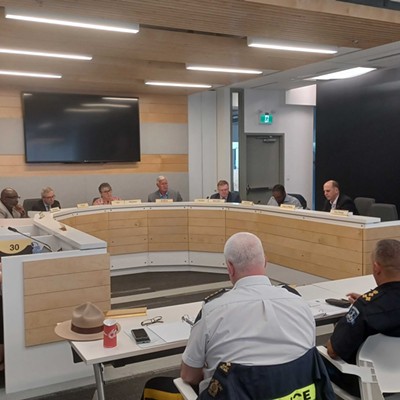The city’s budget process looks different this year, thanks to some changes that city council asked for when it adopted councillor Tim Outhit’s radical motion from November 2023. But some councillors are struggling with these changes, so at the start of the Budget Committee meeting on Wednesday, Jan. 31, they got an explanation about how this year’s budget is going to work.
Historically, the starting point for the budget process was the tax rate: Council would figure out how much it was willing to raise the rate, and then staff would try and cram as much of council’s spending priorities as they could into what was essentially an arbitrarily restricted ceiling on municipal potentia. This year, thanks to the Outhit motion, staff have started with council’s priorities and let that spending get up to council’s desired tax rate. Chief financial officer Jerry Blackwood stressed that this way of presenting information does not limit council’s ability to control municipal spending. This part is not radical.
What is radical is how it changes the political incentives of councillors. Before, the budget process was set up to allow priorities to be left on the floor without much scrutiny, left to wither and die from neglect. But now, in this new and improved budget process, council priorities need to be debated and proactively removed. Meaning it will now come with a political cost if councillors want to save money. In this way we can more directly hold our elected officials accountable for their decisions come election time.
After the explanation about what’s new, the Budget Committee moved onto the spending proposals for 2024/25 from the cluster of municipal administrative services that, by tradition, gets looked at first: Finance and Asset Management, Human Resources, Information Technology, Legal & Legislative and, of course, the office of the top bureaucrat, the Chief Administrative Officer.
Governments in Canada have long used public-private partnerships, with a history that includes colonizing a nation or the first attempt at building a national rail system. But in modern days the Canadian over-reliance on P3 contracts has turned into self-parody.
As part of the city’s ongoing bureaucratic changes, city staff took a look at proposed tenders and at council priorities and did a cost benefit analysis to see if it would make more sense to hire a person as a temporary contractor—the P3 route—or as a municipal employee. They found that paying private contractors for the city’s IT department needs cost about $1.6 million. Hiring the same people as municipal employees will cost less, saving the city approximately $750,000.
A seemingly minor technical detail explained simplistically is that contractors are part of the capital budget, and employees are part of the operations budget. And even though the number of people working for the city is the same, moving people from the capital budget to the operating budget, or from department to department to align with municipal plans, made the year-over-year employee and spending numbers spike in the administrative business unit operating budgets.
This lead councillors Trish Purdy and Shawn Cleary to team up and ask for a motion explaining where these employees are coming from and what they will offer in value to justify the “new” municipal salaries. Cleary is asking for this because he wants to understand how these changes are in line with council’s priorities; Purdy wanted this because she does not want municipal costs to go up. The CAO told councillors that some of this stuff is urgent and critical, like following auditor general Andrew Atherton’s instructions to protect the HRM from cyber attacks.
Some councillors, like Kathrine Morse, saw the Purdy-Cleary motion as micro-managing staff for doing what they’ve been instructed to do. She along with Becky Kent, Sam Austin, Patty Cuttell, and Pam Lovelace voted against it. But since they lost the vote 9 to 5 (David Hendsbee, Paul Russell and Tim Outhit were absent) this will come back in a few weeks.
It’s worth noting that during the debates, the CAO pointed out that if staff were to align municipal priorities with current staff positions it’s likely some older, out-of-date jobs (coughtrafficengineerscough) would be redundant, and could be cut.
The auditor general gave his report; his office is doing fine. It even saved a lot of money last year because for a few months the city had no AG in the transition between Atherton and Evagaline Coleman-Sadd so the city wasn’t paying a salary. He cautioned council not to take the wrong message from that piece of information.
The budget of Property, Fleet & Environment was slightly less dramatic. The only spotlight here is that buying the land required for the HRM’s Bus Rapid Transit plan is now estimated to cost more than $100 million, and will likely require provincial funding to be completed as currently planned.
And finally, councillor Austin asked for more money—$100,000—for police to patrol at Alderney Landing. While this specific request will go to the budget adjustment list for consideration, it also started a bigger conversation about how Halifax Regional Police officers are used as a resource. Last summer, a few different organizations around Alderney paid out-of-pocket to have some cops do walking beat patrols, because apparently patrolling this major public transit hub on busy summer nights is not something HRP cops normally do. Which struck Austin as a sub-optimal use of city resources.
He said that instead of guarding bread, cops could do something useful, and recommended that the police consider places like Spring Garden Road, Alderney, or Scotia Square as areas that get regular beat cops. And as we all know, having a walking beat cop is one of the few things police can do that actually reduces crime.
Councillor Kent, who’s also chair of the Board of Police Commissioners, reminded the Budget Committee that the HRP doesn’t have cops to do walking beat patrols because of staffing challenges created by doing things like extra-duty policing. (Extra-duty policing is when police are tasked to assignments that are above and beyond normal police duties; things like protecting Galen Weston’s profits, patrolling Alderney Landing when needed, and guarding City Hall when council is in session.) This extra $100,000 will go to the budget adjustment list with everyone voting yes, except for Lovelace who called the motion performative. In case this is helpful context, a police officer to very publicly walk around and act as a deterrent to serious crime costs $100,000. Investigating a murder costs anywhere from $1 to 15 million. At a cost of $100,000 a year for prevention, it will be at least 2031 before we break even on the last murder.



















